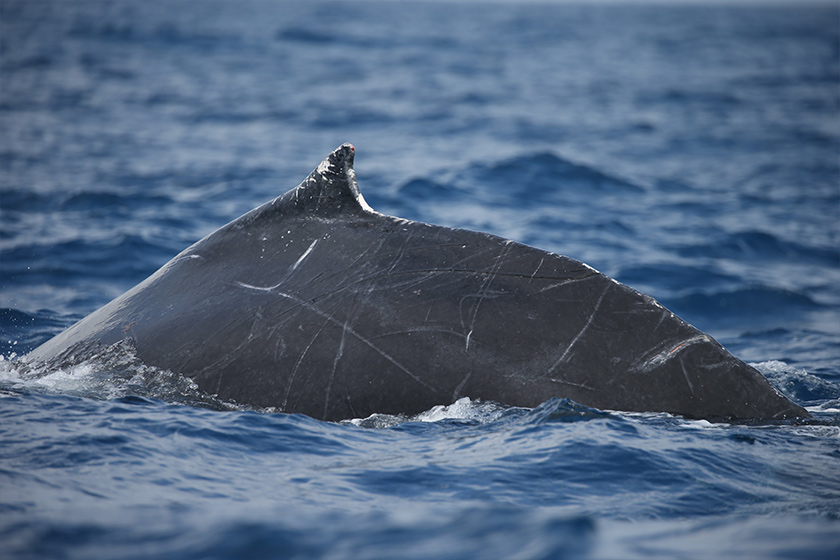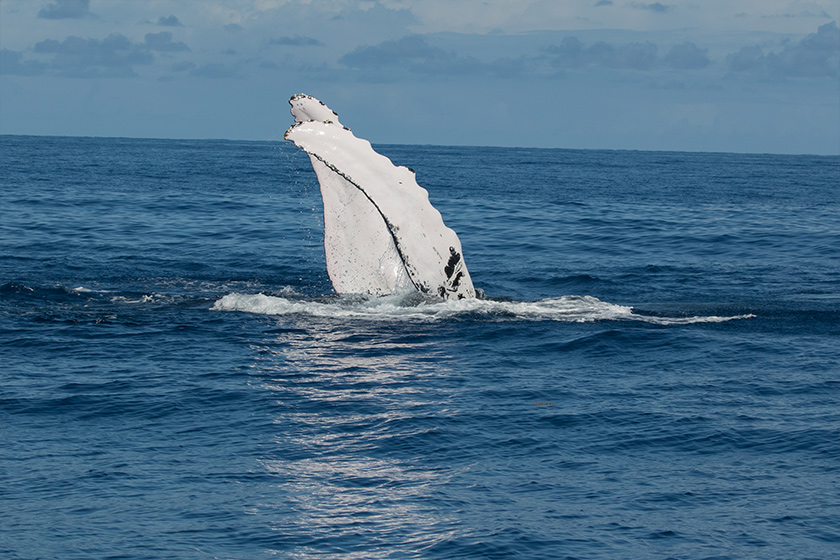Whales of the Silver Bank
The Humpback Whale

Cetaceans are divided into two suborders: the Mysticeti (baleen whales) and the Odontoceti (toothed whales, dolphins and porpoises). The humpback whale (Novaengliae megaptera) belongs to the Mystocetes; humpbacks strain their small prey from the water using thick keratin plates called baleen. In the North, humpbacks are opportunistic feeders foraging on krill, herring, and other prey abundant in the nutrient rich waters off Maine, Newfoundland, Labrador, Greenland and Iceland. They consume massive amounts of food during the brief northern summer, accumulating the fat stores that will sustain them through the lean southern winter.


Humpback whales are renowned “acrobats of the sea,” with most of their surface behaviors on full display year round, though they are especially frequent and energetic in the southern winter. Spinning head breaches, chin breaches, tail breaches, fin slapping, lob tailing, spy hopping and sleeping postures are commonly seen. During the mating and calving humpback whale season, it is thought many of these actions are largely used as a form of solicitation and/or warning to competitors. Below the water, humpbacks are just as dramatic in courtship and tender in mothering, and both displays are thrilling to witness. Combined with relentless high-energy rowdy group action an underwater chorus of whoops and whistles, humpback activity in the Antilles is frequent and exciting above and below water.
From Our Clients
This was the second time on the Silver Bank and the first time with Aquatic Adventures. Tom, captain and crew did an outstanding job; simply aces across the board.
-- Matt and Joedee Foster











